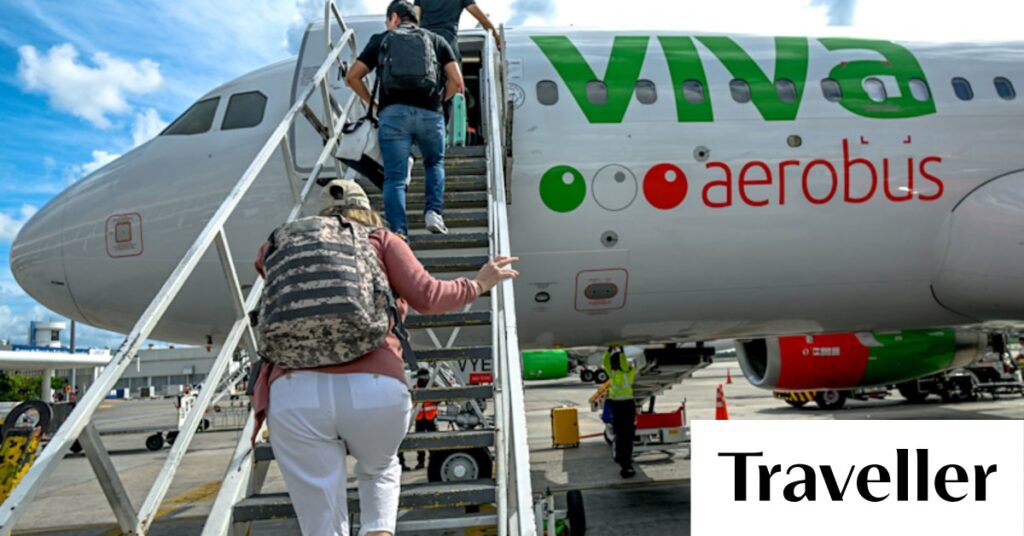
Flying with Viva Aerobus, often dubbed the “Ryanair of Mexico,” offers a glimpse into the world of budget air travel where comfort is compromised for cost savings. On a recent flight with a 3-3 seat layout, passengers found themselves in 18-inch wide seats with a pitch of 29 inches. Notably, these standard seats do not recline, a feature reserved for the pricier “Priority” and “Space+” options.
As the airline industry continues to evolve, Viva Aerobus represents a growing trend of budget carriers that offer low base fares but charge for additional comforts. This development comes as airlines worldwide seek to maximize revenue through ancillary fees, a strategy that has proven successful for many low-cost carriers.
Onboard Experience: Entertainment and Services
For those seeking in-flight entertainment, Viva Aerobus provides the “Viva Play” service via Wi-Fi, offering movies, e-books, games, and podcasts for an additional $5. However, the absence of power outlets means passengers must rely on their own devices and ensure they are fully charged before boarding. The airline’s eViva magazine is available at each seat, though language barriers may limit its accessibility for non-Spanish speakers.
Service onboard is minimal but generally pleasant. Announcements are made in both Spanish and English, though not all are translated, leaving some passengers potentially missing out on non-critical information. The airline offers an extensive menu for purchase, including local favorites like Salsa La Botanera to accompany snacks, and a selection of alcoholic beverages, such as Tequila Siete Leguas and local beers like Tecate, Indio, and Sol.
Sustainability Efforts and Environmental Impact
Viva Aerobus is making strides in sustainability, offering passengers the option to purchase carbon offsets at the time of booking. The airline claims to have the lowest emissions-per-passenger rate in Mexico, a feat attributed to its modern and fuel-efficient aircraft fleet, the newest in Latin America.
As environmental concerns become increasingly important to travelers, airlines like Viva Aerobus are under pressure to demonstrate their commitment to reducing carbon footprints. This move represents a significant step towards greener aviation practices, aligning with global trends in the industry.
Cost Considerations: The True Price of Budget Travel
The initial appeal of Viva Aerobus lies in its competitive pricing, with round-trip fares from Los Angeles starting at approximately $350. However, the true cost of flying budget often emerges through additional fees for services such as extra baggage, which can unexpectedly elevate the total expense beyond that of full-service carriers like Aero Mexico.
This pricing strategy reflects a broader industry trend where airlines unbundle services traditionally included in the ticket price, allowing passengers to customize their travel experience. While this can lead to savings for those traveling light, it can also result in higher costs for those requiring added amenities.
The Verdict: Balancing Cost and Comfort
Ultimately, flying with Viva Aerobus offers a no-frills experience that serves its purpose for budget-conscious travelers. The red-eye flight was largely uneventful, with a bumpy landing and festive music marking the arrival in Mexico. For those willing to forgo certain comforts, the airline provides a viable option for affordable travel.
As the aviation industry continues to adapt to changing consumer preferences and economic pressures, the rise of budget airlines like Viva Aerobus highlights the delicate balance between cost and comfort. For travelers, the key lies in understanding the trade-offs and planning accordingly to ensure a satisfactory journey.







